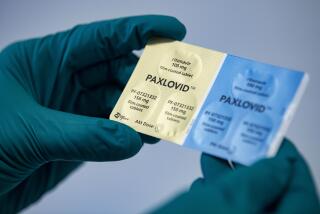Only half of cardiac victims call 911
- Share via
Americans are more aware than ever about the importance of heart health, getting their cholesterol and blood pressure checked and obsessing about fat in their diets. Yet, when it comes to having a heart attack, they can be downright foolish. Just half of them call 911 for an ambulance.
The rest (typically younger men) drive themselves to a hospital or ask someone for a ride, potentially missing out on lifesaving treatment by paramedics before they get to the emergency room, according to a study published in the Nov. 25 online version of Circulation: Journal of the American Heart Assn.
Those arriving by ambulance not only had a greater chance of receiving clot-busting therapy or an angioplasty to open up clogged arteries, the study found, they also received such therapies more quickly. They got clot-busting medications an average of 12 minutes sooner than those who drove themselves. Those who underwent angioplasty to open up clogged arteries received treatment an average of 31 minutes sooner than those who came on their own -- and 56% of them got it within the 90-minute treatment window recommended by the American Heart Assn. and the American College of Cardiology.
“These need to be given early to be most effective,” Dr. John G. Canto, the lead author and director of the chest pain center at the University of Alabama at Birmingham, said in a statement.
People who arrived at the hospital by ambulance tended to be older, sicker, more likely to be suffering from erratic heart rhythms and more likely to have had a history of heart problems. Their death rate was 14.3%, compared with 5.5% of the group who weren’t brought by ambulance. But two-thirds of that difference could be explained by their advanced age and advanced illness, putting them at higher risk of death than those who didn’t get medical attention from ambulance crews.
Each year, more than 1.1 million Americans suffer heart attacks and more than 475,000 die, half within the first half-hour after the attack. During a heart attack, a clot cuts off blood supply to part of the heart muscle. Signs of a heart attack include pain or discomfort -- such as tightness or a squeezing sensation -- in the center of the chest, arms, back, neck jaw or stomach; shortness of breath; breaking out in a cold sweat; nausea or light-headedness.
The latest statistics are based on four years of data, involving 772,586 patients in the National Registry of Myocardial Infarction, a study of heart attack patients treated at a quarter of the nation’s acute-care hospitals.






